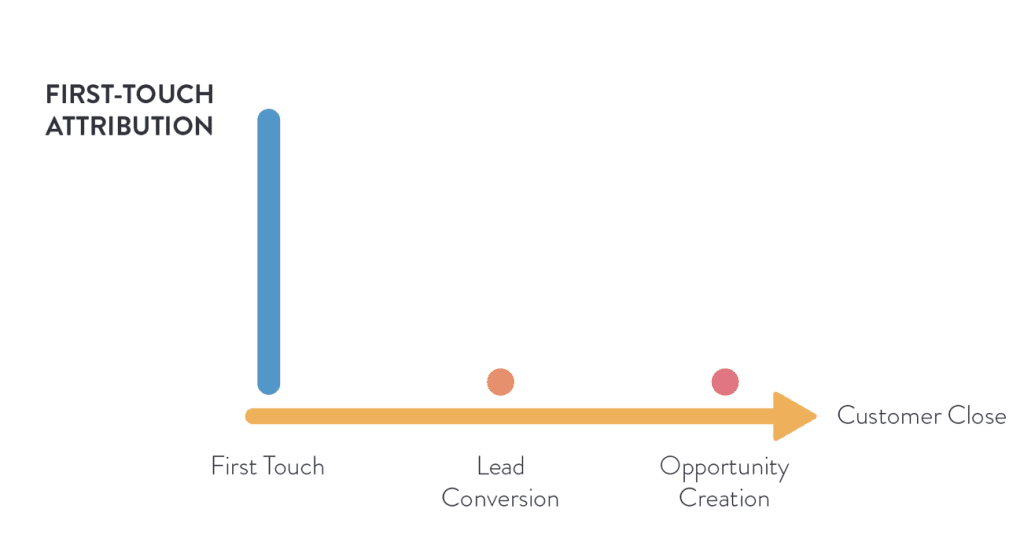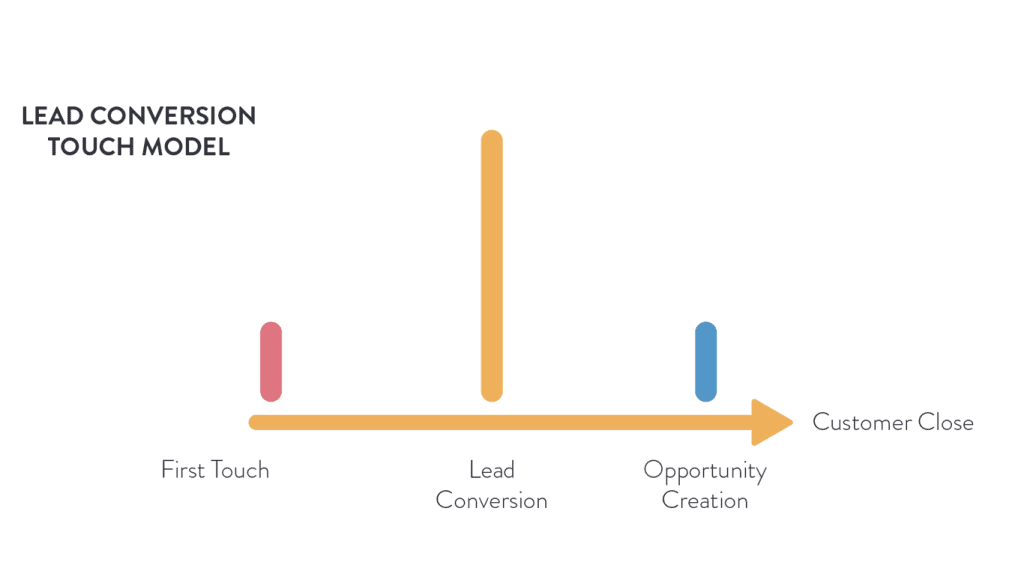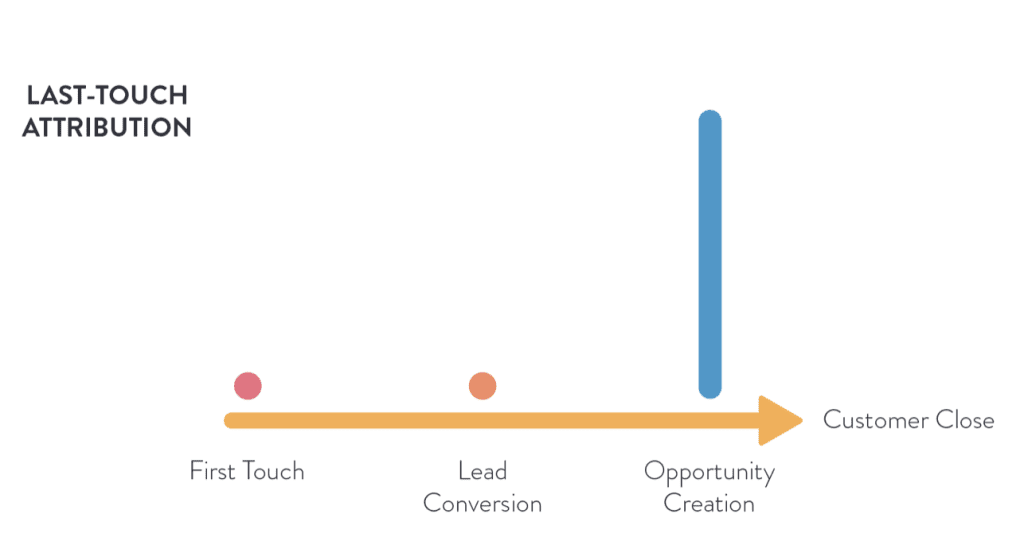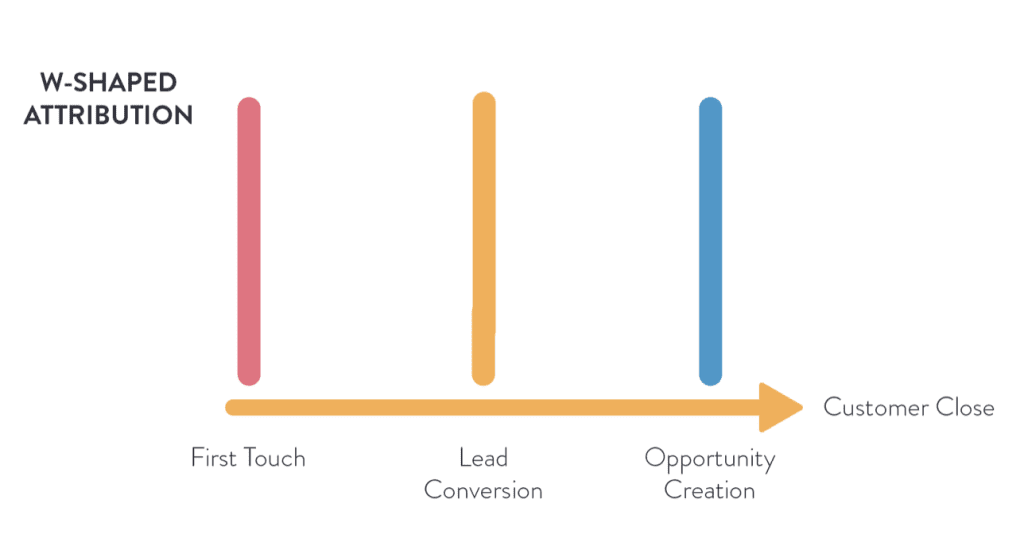Event ROI is anything but simple. But the more complicated the ROI picture gets, the more accurate event attribution becomes, and the more powerful your event engine will drive revenue.
In this guide, we will look at the many different forms of determining, measuring, and analyzing event ROI. Of course, you can’t go about measuring ROI if you don’t have a sound attribution plan in place. That’s why you’ll find a large portion of this piece is dedicated to event marketing attribution, as well.
Key takeaways
- Event ROI measures net value ÷ investment, including both tangible outcomes (revenue, sponsorships) and intangible ones (attendance, satisfaction).
- Use the simple, incremental, or incremental margin models depending on your complexity needs.
- Attribution models like first touch, last touch, lead conversion, and W‑shaped provide varying visibility across the funnel.
- Technology tools (CRMs, BI, marketing platforms, attribution software) and their integrations are essential for accurate, scalable ROI tracking.
- Tailor ROI strategies by event type—trade shows, virtual, conferences, hybrid—and adapt tools accordingly.
Buckle up. It’s going to be an ROI-y ride.
Understanding event ROI: definition & key metrics
Event ROI encompasses more than revenue; it’s the net value you gain from your event relative to the total investment. In addition to ticket sales, ROI can include sponsorships, lead generation, attendee satisfaction, and even brand exposure, all balanced against costs like swag, labor, and opportunity costs.
Note that “value” is a much broader term than “event revenue.” While “value” could be the revenue generated from registrations, it could also include sponsorships and partnerships, leads added to the sales pipeline, the number of people who attended the event, the satisfaction of attendees, and more.
Similarly, the “cost” of an event could be considered the financial price of producing an event, but it could also indicate the time and resources that go into an event, the opportunity cost of staging an event, and so on.
Value
- Event revenue
- Lead generated
- Pipeline value
- Press mentions
- Attendees
- Sponsorships
- Partnerships
Cost
- Flights and travel
- Lodgings
- Swag
- Labor
- Time
- Food and drink
- Event booth/stall
Although event profit equals net value–net cost, event ROI equals net value/net cost. The result is the event ROI percentage. This is the simplest model for calculating event ROI. Later, we’ll look at several other event ROI models helpful for determining revenue-based ROI.
Setting SMART goals for event ROI success
Begin every event campaign with well‑defined goals to drive real ROI. SMART (Specific, Measurable, Achievable, Relevant, Time‑bound) goals let you tie outcomes, like registrations or sponsorship revenue, directly to performance metrics.
The best way to determine whether a marketer is getting the value per cost desired (ROI) is by setting goals that are SMART and CLEAR. Then, connect each goal to specific success metrics.
🎯 Setting goals is one of the first steps in creating a content strategy. You’re probably familiar with the SMART goals, but what about the more adaptable CLEAR goals? What do you choose? 🤔 pic.twitter.com/gL4V8wpLUh
Real‑world examples of event ROI metrics, goals, & tools
Connecting your business objectives to event metrics is key. Here are practical combinations that demonstrate goal‑setting, measurable outcomes, and the platforms that make it happen.
| Business Goals | Event Goals | ROI Metrics | ROI Tools |
| Build Brand Awareness | Increase Event Registrations | # of Registrations | Event Management Software |
| Increase Social Media Presence | # of Social Media Impressions | Event Management Software, Social Media Metrics Platform | |
| Increase Media Coverage | # of Media Placements | Manual Analysis, Attribution Software | |
| Increase Website Traffic | # of Website Visits # of Website Visits from Event Page | Web Analytics Platform | |
| Drive Sales Revenue | Generate Leads | # of Prospects Added to Database # of Accounts Added to Database |
CRM |
| Generate Pipeline Value | $ Value of Pipeline Created | CRM | |
| Opportunities Created | # of Opportunities Created | CRM | |
| Accounts Closed Won | # of Accounts Closed Won | CRM | |
| Educate and Delight Customers | Increase Users of Product/Specific Product Features | # of Monthly Active Users # of Users on a Specific Feature # of Demos Given # of Samples Given |
Product Analysis Platform, Event Staff Reporting |
| Increase Satisfaction of Customers | Pre-event Survey Mid-event Survey Post-event Survey (NPS) |
Event Management Software | |
| Increase Customer Retention | # of Appointments with Customers | Event Staff Reporting, Event Scheduler | |
| Event Engagement | Increase Session Engagement | # of Questions Asked in Sessions # of Live Poll Responses |
Event Staff Reporting, Event Management Software |
| Increase Event App Engagement | # of Event Community Check-ins # of Event App Downloads |
Event Management Software | |
| Increase Social Media Engagement | # of Company Mentions # of Event Hashtag Mentions |
Event Management Software, Social Media Analytics Platform | |
| Educate and Delight Partners | Increase Partner Engagement | # of Visits to Partner Booths # of Event App Partner Page Impressions # of Event App Partner Logo Impressions # of Event App Partner Page Clicks |
Event Staff Self-reporting, Event Management Software |
| Increase Satisfaction of Partners | Pre-event Survey Mid-event Survey Post-event Survey (NPS) |
Event Management Software | |
| Drive Recruitment | Increase Recruiting Leads | # of Prospects Added to Pipeline # of Employees Recruited |
CRM |
Event ROI calculation models: simple vs incremental vs margin
There are several different models for measuring ROI. Each presents strengths, weaknesses, and levels of complexity. You’ll find room for complexity even if you choose the Return/Investment model. Event value can mean revenue generated directly from the event (registrations, sponsorships, customers), but it can also mean a variety of other goals and metrics that may be easy or next-to-impossible to tie a dollar value to (leads generated, brand awareness, customer lifetime value).
Choosing the right ROI model depends on your desired depth of insight. Here are three models, from basic to advanced, and what they reveal about event performance. You’ll notice that we use the term event revenue, but we’re talking about the overall event value between you and us.
1. Simple: return/investment
The simplest model is the return/investment model mentioned near the top of this piece. It’s ROI in its purest form. How much did you get out of the event? How much did the event cost? Simple.
Return/Investment ROI = Event Revenue / Event Expenses
Pro: Easy to calculate.
Con: Over-inflates the event revenue and doesn’t illustrate profit.
2. Advanced: incremental revenue
In the incremental revenue model, things get a bit more complex. Rather than just looking at the event revenue over the event expense, we are looking at the event profit over the event expense by looking at the yield of your event and then seeing how much profit you are getting for your investment.
Incremental Revenue ROI = (Event Revenue – Event Expenses) / Event Expenses
Pros:
- Relatively easy to calculate.
- Takes into account profit.
Con: Does not consider the cost of goods sold (COGS).
3. Complex: incremental margin
For an even more complex breakdown, try the incremental margin model. This takes into account the gross margin instead of event revenue. The gross margin can be found by subtracting the COGS from the event’s revenue. The result is a much bigger picture of event ROI.
Gross Margin = Event Revenue / COGS
COGS may vary depending on the type of event that you are holding or whether you are having an event or attending one. It could include various line items such as swag, design collateral, food, dinners, and drinks. If this sounds very similar to event expenses, that’s because it is. More often than not, COGS will be smaller than your event expense. It’s also thought of as something necessary for making a sale happen. We’ll let you noodle on that for a bit.
If you have questions about what is considered COGS for your event and what is considered event expenses, you might want to reach out to an accounting professional. If someone with accounting acumen is out of reach, you might want to stick to the incremental revenue or the return/investment models.
Incremental Margin ROI = (Gross Margin – Event Expenses) / Event Expenses
Pro: Extremely robust, big picture analysis of your event.
Con: Calculating COGS can be an extremely difficult task for some businesses.
All-in-one event management software not only makes it possible to measure otherwise inaccessible data, but it also makes measuring holistic data a heck of a lot easier. Sure, we’re an event technology company, so there’s a good reason why we’d want this to be the case. But beyond wishful thinking, the market presents clear evidence that this is the case.
Several sources indicate that the event technology industry growing rapidly. According to Verified Market Research, the size of the events industry — which was valued at $887 billion in 2020 — will reach a value of $2.194 trillion by 2028! It’s no wonder there are 181 event management platforms on G2 and a whopping 749 event management products on Capterra.
When measuring event ROI, different event tech platforms have different strengths. To figure out which event platform is right for you, we’ve built The Event Software Buyer’s Guide to help you understand what to look for, how to make the right decision, and questions to ask to ensure you’re getting the right software for your needs.
Event marketing attribution models explained
Hand-in-hand with event ROI is the question of event marketing attribution, or the ability to connect the dots between your event and additional revenue. For instance, if someone attends your event, it’s relatively easy to see if they become a customer onsite, but what happens once they leave? For proving event ROI, you will want to track whether or not that person becomes a customer — days, weeks, or even years — down the line. By that same token, you will want to know what other marketing initiatives contributed to that final conversion.
To truly prove event ROI, you need to map which marketing activities drive conversions. Let’s break down attribution models, from first touch to W‑shape, to see which works best for your funnel.
1. The first-touch model
The first-touch model is one of the most simple models in theory but, in practice, proves quite hard to track. It attributes 100% of the return generated to the marketing initiative that drives someone to interact with your brand. To be clear, this is not tracking a conversion or someone submitting their data to your company. It is tracking that first activity that would lead to a conversion.
Given that first touch occurs before a conversion happens, it can be challenging to track. Advanced attribution and analytics tools (like Google Analytics and Bright Funnel) can help event marketers keep track of this metric for most online interactions. However, some guesswork might be required when it comes to offline interactions.
Example: Someone visits your blog, visits your event website, and then attends an event. In this case, 100% of the credit goes to whatever blog article brought that person to your website.

Pro: It’s simple — in theory.
Cons:
- It’s prone to technological limitations.
- It focuses on one part of the marketing funnel.
2. The lead-touch model
The lead model attribution model is probably the most simple and popular one. In this model, the return generated is 100% associated with the first marketing initiative that causes an individual to convert and become known to your company.
Example: An anonymous contact visits your website and submits a form to download a white paper. In this case, you may want to nurture this contact by inviting them to an event, which they then attend.
If you used the first-touch attribution model, the event wouldn’t get any credit for the return. With the lead-touch model, however, the event receives 100% credit for the return.

Pros:
- It’s very simple to implement.
- It doesn’t require a complex marketing or event stack.
Cons:
- It doesn’t look at the action a customer took before becoming an opportunity or customer.
- It focuses on one part of the marketing funnel only.
3. The last-touch model
In the last-touch attribution model, the return generated is 100% associated with the action that someone takes immediately before converting to an opportunity or customer. Like the first-touch model, the last-touch model is relatively easy to implement.
Example: Someone becomes known to your company by submitting their information to download an ebook. Then, they view an on-demand webinar and attend an event. Finally, they become a customer. In this scenario, only the event will receive credit for the return generated.

Pros:
- Easy to implement.
- Good for businesses dealing with an extensive transaction database.
Cons:
- It may require a more advanced platform.
- Focuses on one part of the marketing funnel.
4. The W-shaped model
The w-shaped model may be the most accurate and comprehensive model for attributing event marketing ROI. It’s also the most difficult to implement. It considers all of the points of contact and marketing initiatives that have caused a contact to close. This model delivers 30% credit to three touches: the first touch, lead creation, and opportunity creation. The final 10% is divided among other touchpoints.
Example: Someone becomes known to your company by visiting your blog, attends a webinar, converts by attending an event, and finally becomes a customer. In this case, a marketer might attribute 30% to the blog, 30% to the webinar, and 30% to the event. The other 10% may be attributed to interacting with social posts or another form of engagement.

Pros:
- It’s the most comprehensive attribution model.
- It takes into account multiple aspects of the marketing funnel.
Con: Requires an advanced attribution platform.
Additional multi‑touch & custom attribution models
Sometimes standardized models don’t fit complex customer journeys. Here are multi‑touch and custom attribution models, including linear, U‑shaped, and time‑decay, so you can tailor where needed.
- Linear multi-touch model: This model gives equal credit to every touchpoint a customer has along their path to conversion. The challenge with this model is that not all touchpoints are created equally. Is someone sharing your LinkedIn post to their timeline equally impactful to them as attending a two-day event? Without a doubt: no. This is one of the most significant shortcomings of this model
- U-shaped multi-touch model: In this model, the most credit is given to actions at the start (40%) and end (40%) of the conversion path. The other 20% is distributed throughout touchpoints along the customer journey. This method offers insight into what started the customer’s journey and what ultimately led to their conversion. The challenge with this model is that it may put too much weight on initial actions that aren’t as impactful in the journey.
- Time-decay multi-touch model: This model puts the weight of attribution on touchpoints closer to conversion. Credit is still given throughout the journey, but the most value is attributed to final touchpoints that led to conversion. This approach may be short-sighted and place too much weight on bottom-of-the-funnel content, which can negatively impact a marketing team’s content strategy.
Tracking ROI means managing data across platforms. Whether it’s CRMs like Salesforce, BI tools like Tableau, or attribution platforms like Full Circle Insights, this section outlines the software categories that keep ROI on track.
1. Marketing platforms
Covering a broad range of functions — from email marketing management to content management, marketing automation, and more — marketing platforms provide event marketers with a suite of tools for engaging and activating customers. As a software buyer, you’re probably familiar with these examples of marketing platforms:
2. CRMs
Customer relationship management systems (or CRMs) are the backbone of the modern event marketer’s strategy. They enable businesses to manage relationships with current and prospective customers. They also manage the data and information associated with them. Here are some top-tier CRMs:
3. Business Intelligence platforms
Thanks to the COVID-19 pandemic, data creation and replication reached a new high, according to Statista. In fact, by 2025, global data creation is projected to grow to more than 180 zettabytes from 64.2 zettabytes in 2020. All of that to say: The volume of data around events and ROI continues to grow, and you have to have a handle on yours.
More and more companies are leveraging technologies that enable them to track valuable data. Business intelligence platforms help event marketers understand this data and draw meaningful conclusions. Here are some examples of business intelligence platforms you should look into:
4. Attribution platforms
As marketing has become increasingly digital, many attribution platforms have arrived on the scene to help marketers connect the dots between their numerous marketing campaigns — both online and offline. Here are some top-performing attribution platforms:
Why event tech integrations improve ROI tracking
Isolated systems limit insight. When your event platform, CRM, and marketing tools are integrated, you get seamless data flow, enabling clearer attribution and ROI analysis, from registration to purchase.
As an event marketer, the center of your web of integrations should be your event platform. From there, you’ll want to ensure your event software it is connected to other vital platforms across marketing, sales, and other relevant departments. Doing so will ensure that your event ROI data is efficiently and accurately being tracked.

Curious about the difference between integrations and apps and why they’re both important? Check out “Event Management Software: What’s the Difference Between Apps and Integrations?“
Maximize ROI at trade shows, conferences, virtual, & hybrid events
Each event type has unique challenges. Whether you’re planning a trade show in California, a global virtual summit, or a hybrid conference, these tailored strategies will help you drive ROI higher.
How to increase trade show ROI
As far as average ROI for trade shows, 5% to 10% of trade show leads can convert, according to data from Trade Show Labs. Among Fortune 500 companies, 14% reported earning $5 for every $1 spent on their trade show exhibitions.
- Set clear objectives: Define specific goals for lead generation, brand exposure, or partnerships.
- Pre-show marketing: Promote participation, schedule appointments, and engage with potential attendees.
- Captivating booth design: Create an attractive and interactive booth to attract visitors and stand out.
- Meaningful interactions: Train your staff to engage with attendees, capture leads, and foster relationships.
How to increase virtual event ROI
- Engaging content: Offer compelling presentations, interactive sessions, and virtual networking opportunities to keep attendees engaged.
- Virtual sponsorships: Provide opportunities for sponsors to showcase their brand through virtual booths, sponsored sessions, or downloadable resources.
- Data analytics: Use event analytics to track attendee behavior, measure engagement, and identify areas for improvement.
- Virtual event follow-up: Implement a post-event communication strategy to nurture leads and maintain attendee connections.
How to increase conference ROI
- Diverse speaker lineup: Curate a mix of renowned industry experts and up-and-coming thought leaders to attract a wider audience.
- Attendee engagement: Foster networking through dedicated networking sessions, roundtable discussions, and interactive workshops.
- Sponsorship packages: Offer attractive sponsorship packages with various levels of exposure, including branding opportunities and speaking slots.
- Post-event surveys: Gather feedback to identify strengths, areas for improvement, and potential revenue streams for future events.
How to increase hybrid event ROI
- Seamless audience integration: Ensure a seamless experience for in-person and virtual attendees, offering synchronized content and interactive features.
- Hybrid networking opportunities: Facilitate connections between virtual and in-person attendees through dedicated networking platforms and hybrid sessions.
- Enhanced digital presence: Leverage social media, live streaming, and event apps to extend the reach and impact of your event.
- Analyze hybrid metrics: Measure virtual and in-person participants’ attendance, engagement, and satisfaction levels to refine future strategies.
By implementing these strategies, you can optimize your event ROI, increase attendee satisfaction, and achieve your desired outcomes.
Choose the best event software to calculate ROI accurately
We’ve covered a lot of ground in this guide. From event ROI models and attribution models to business objectives, tools, and technologies that can help you become an ROI master. If there’s one thing to take away from this piece, it’s this: Measuring event ROI is not only possible, it’s easier than you think. The trick is in finding the right technology.
Not sure where to start? We’ve got you covered in our Event Software Buyer’s Guide. Download the guide, and rest assured that you’re choosing the right event management solution for your ROI and event goals.
Frequently asked questions about event ROI and attribution
The incremental margin model offers the most comprehensive insight by incorporating profit margin rather than revenue alone, but it’s also the most complex to calculate.
The W‑shaped or multi‑touch models are ideal for hybrid events, as they recognize multiple touchpoints, from virtual ads to in‑person attendance, that contribute to conversion.
This article has been updated from an original piece published in 2023.
